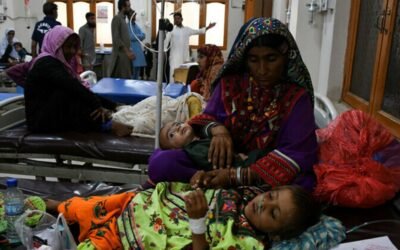Global warming negatively impacts Pakistan’s agriculture by reducing crop yields (like wheat, rice, and cotton) due to extreme heat and erratic rainfall, leading to increased food insecurity, higher food prices, and threatening rural livelihoods and economic stability. It also exacerbates water scarcity and floods, disrupts farming cycles, promotes pest infestations, and degrades soil quality, with the most vulnerable communities suffering the brunt of these challenges.
Pakistan has over 7,000 glaciers — the most outside the polar regions.
🌡️ Global warming is melting them at record speed, triggering glacier bursts that flood valleys and wash away villages.#ClimateJustice pic.twitter.com/RadGiF0Bkj— Anoshay Ikram (@Anushayer) August 25, 2025
Pakistan is a country where farming is more than work; it’s a way of life. Farmers grow wheat, rice, cotton, and fruits to feed millions and fuel the economy. But climate change is making their work much harder. Heat, floods, droughts, and melting glaciers are reshaping fields and livelihoods across the land. Yet, with smart planning and strong state action, Pakistan can keep its agriculture healthy and its people fed.
You May Like To Read: Youth, Digital Media, and Cultural Storytelling in Pakistan
Heat and Shrunken Growing Seasons
Rising temperatures are shortening the time crops have to grow. Climate models show Pakistan’s crops like wheat and rice could get 3%–14% less yield due to heat. These changes also raise how much water crops need, just when water is getting scarcer.
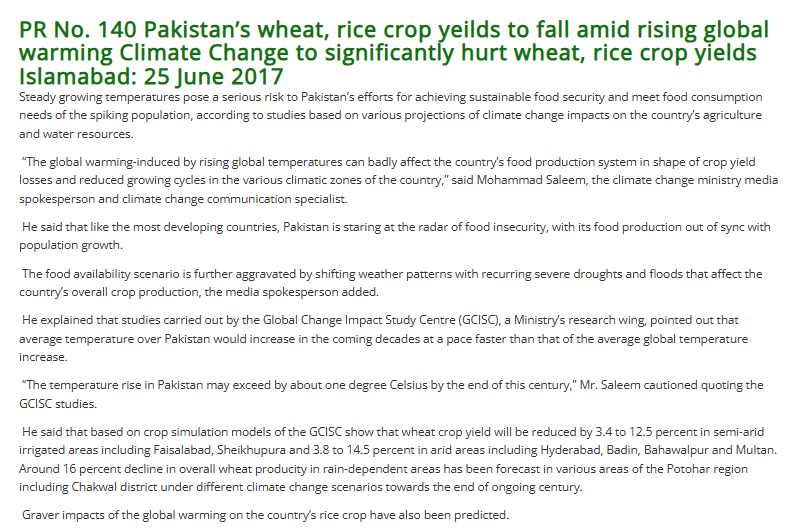
Image Credit: PID, Government of Pakistan
Drought and Water Stress
The monsoon patterns are unpredictable now. Some years bring floods, while others bring drought. Farmers can’t depend on rain anymore, especially in places like Sindh and Balochistan. The Pakistan Meteorological Department warns that rainfalls dropped nearly 40% in late 2024 across many areas.
Forced to cope with super floods, droughts, heatwaves, forest fires and cyclonic storms – a 3 year #ClimateEmergency needs to be declared in #Pakistan with complete political consensus – to ensure continued priority an focus on this inescapable and escalating reality pic.twitter.com/CxZPkfPUOt
— Malik Amin Aslam (@aminattock) August 31, 2025
Glacial Melt and Flash Floods
In the north, glaciers are melting fast. Glacial lakes form and burst without warning, causing flash floods with huge damage to land and farms. Recently, such floods affected Gilgit-Baltistan, killing many and washing away farmland.
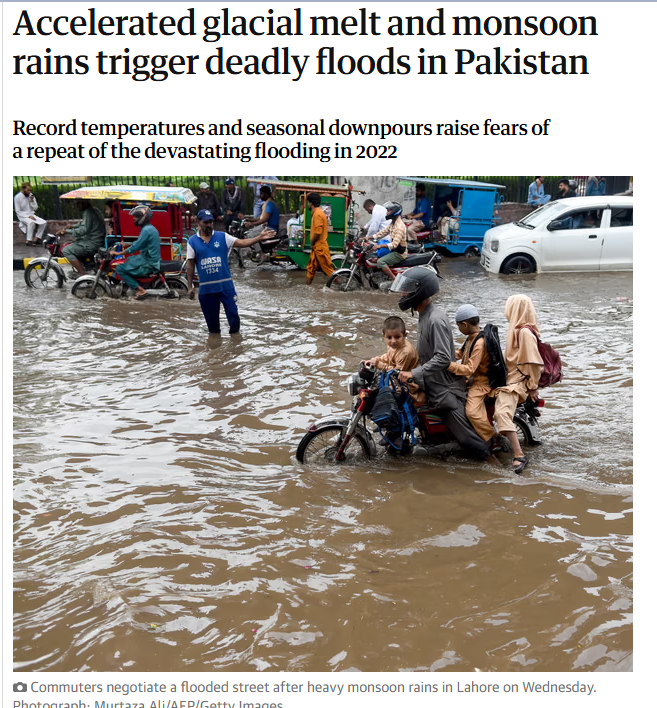
Image Credit: The Guardian
Devastating Floods and Lost Crops
The 2025 floods are still causing destruction in whole country. Torrential rains and broken dams flooded much of Sindh and Punjab. Over a billion dollars worth of crops are lost, and farmland remains damage. This is not just rain, it is a climate shock that reminds us how fragile the system is.
Climate Shocks and Human Cost
Farmers don’t just lose crops, they lose homes, tools, and hope. During the 2022 floods, about 33 million people were displaced. Families moved to shelters, their livelihoods swept away in days. Rebuilding takes years, but with help, strength can be renewed.
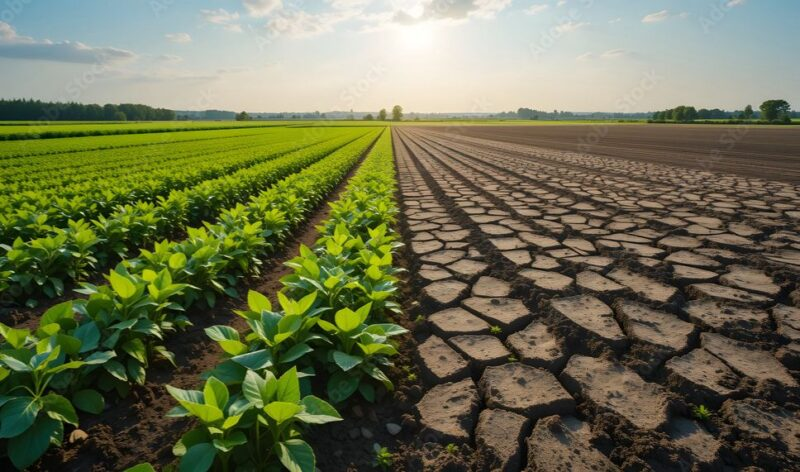
Image Credt: Accountability Lab Pakistan
Rising Water Needs
As heat warms the land, crops need more water. Detailed studies show irrigation demand could jump sharply, especially for vegetables and rice. In dry zones of Pakistan, farmers may need much more water just to keep plants alive.
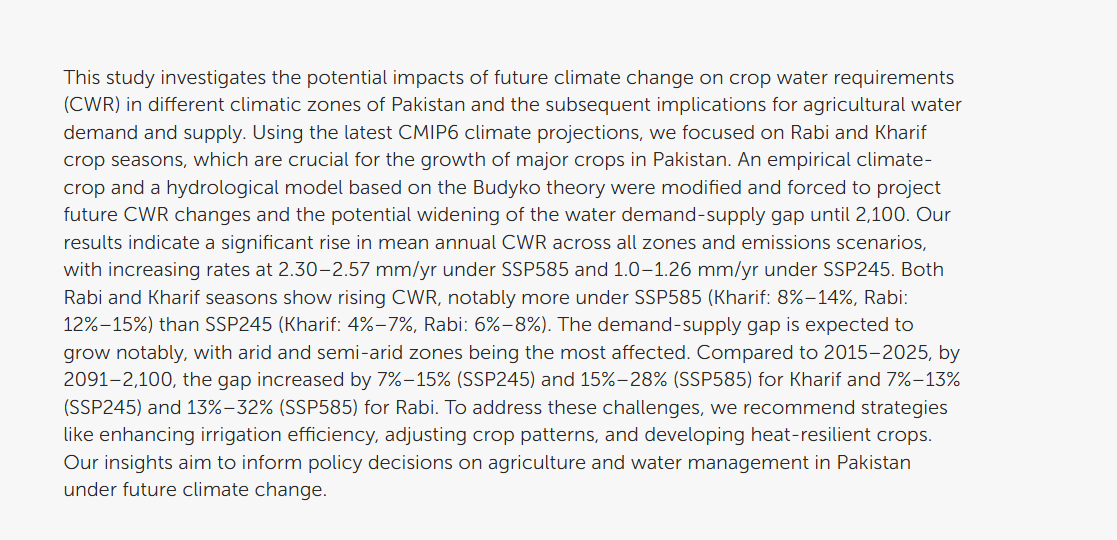
Image Credit: Frontiers research
Pests, Diseases, and Crop Stress
Heat and moisture changes create better conditions for pests and diseases. Crops exposed to these threats may fail more often. This risk is rising with climate change, and it could hurt farms unless farmers use better tools and techniques.
Heatwave Damage and Crop Loss
In 2024, a brutal heatwave struck Sindh and Sindh’s fields with temperatures up to 49°C. More than 500 people died in a few days. Crops and livestock also suffered greatly. Extreme heat dries soil and pushes heat-tolerant (and costly) solutions.
Rising Costs of Production
When crops fail or yields fall, food prices rise. After floods and heat, vegetables like onions tripled in price. Many families spend more on food and less on other essentials. That is a direct effect of climate stress.
Government-Aided Solutions
The state is not sitting still. The government is helping farmers adopt climate-smart seed varieties and better irrigation, like drip systems. These changes help crops remain healthy even under tough weather.
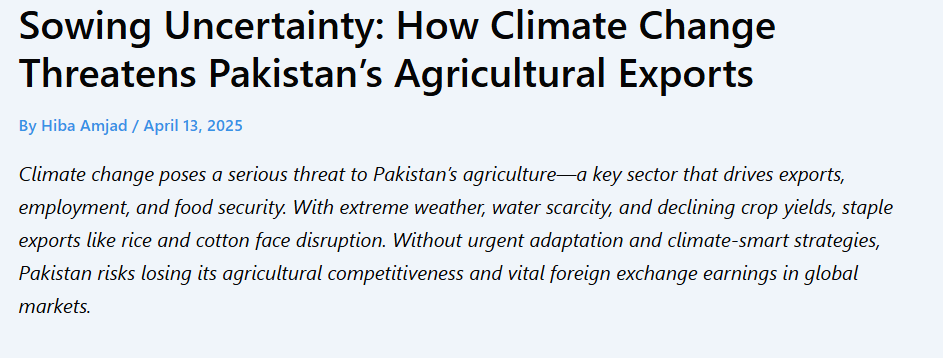
Image Credit: Paradigm Shift agriculture report
Hope with Technology and Knowledge
There are tools for adapting: drip irrigation, drought-resistant seeds, and teaching farmers how to plant according to weather. With better science and outreach, agricultural communities can survive and even grow stronger.
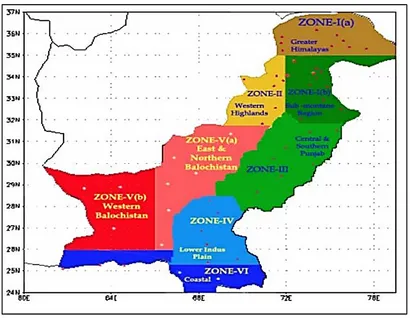
Image Credit: Climate-smart agriculture practices
Global warming is not a faraway fear, it is here, and it affects Pakistan’s farms today. Heatwaves, droughts, floods, and melting glaciers are striking at the heart of rural communities. But this is not a story of loss alone.
The state is acting. It is helping farmers with seeds, water-saving tools, tree planting, and new technology. But policies work best when paired with community effort. When farmers and local governments work together, small changes become strong shields.
Farming must adapt to survive—and it can. With smart policies, modern tools, and farmers ready to learn, Pakistan can keep its fields green. A stable food supply and strong agriculture are not just dreams; they are achievable with courage, wisdom, and unity.
You May Like To Read: How Pakistani Artists Are Gaining Global Recognition


